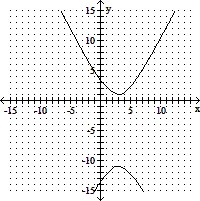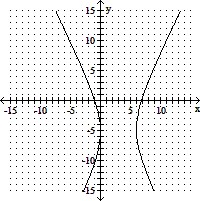Construct a probability model for the experiment.Spinner I has 4 sections of equal area, numbered 1, 2, 3, and 4. Spinner II has 3 sections of equal area, labeled Red, Yellow, and Green. Spinner III has 2 sections of equal area labeled A and B. Spin Spinner I, then Spinner II, then Spinner III. What is the probability of getting a 2, followed by Yellow or Green, followed by B?
What will be an ideal response?
S = {1 Red A, 1 Red B, 1 Yellow A, 1 Yellow B, 1 Green A, 1 Green B, 2 Red A, 2 Red B, 2 Yellow A, 2 Yellow B, 2 Green A, 2 Green B, 3 Red A, 3 Red B, 3 Yellow A, 3 Yellow B, 3 Green A, 3 Green B, 4 Red A, 4 Red B, 4 Yellow A, 4 Yellow B, 4 Green A, 4 Green B};
Each outcome has a probability of  .
.
The probability of getting a 2, followed by Yellow or Green, followed by B is 
You might also like to view...
Find the principal unit normal vector N for the curve r(t).r(t) = (4 sin t)i + (4 cos t)j + 8k
A. N = (-cos t)i - (sin t)j B. N = (sin t)i + (cos t)j C. N = (-sin t)i - (cos t)j D. N = (-sin t)i + (cos t)j
Solve the problem.A biologist has 70 tags to apportion among three different animal populations. The populations of each are in the table. Find the apportionment under the Huntington-Hill method.AnimalABCTotalPopulation5985723511,08024,300
A.
| Animal | A | B | C |
| Population | 5985 | 7235 | 11,080 |
| Apportionment | 18 | 21 | 31 |
B.
| Animal | A | B | C |
| Population | 5985 | 7235 | 11,080 |
| Apportionment | 17 | 21 | 32 |
C.
| Animal | A | B | C |
| Population | 5985 | 7235 | 11,080 |
| Apportionment | 18 | 20 | 32 |
D.
| Animal | A | B | C |
| Population | 5985 | 7235 | 11,080 |
| Apportionment | 17 | 20 | 33 |
Subtract.-147 - (-88 )
A. 235 B. -59 C. 59 D. -235
Graph.36x2 - 9y2 - 216x - 90y - 225 = 0
A. 
B. 
C. 
D. 